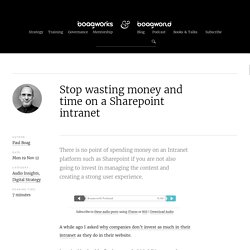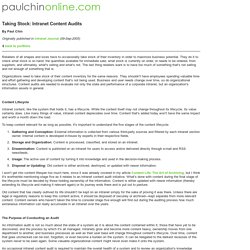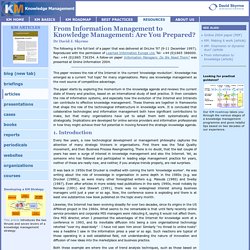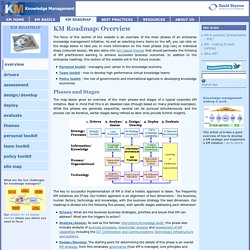

Stop wasting money and time on a Sharepoint intranet. There is no point of spending money on an Intranet platform such as Sharepoint if you are not also going to invest in managing the content and creating a strong user experience.

Subscribe to these audio posts using iTunes or RSS | Download Audio A while ago I asked why companies don’t invest as much in their intranet as they do in their website. I received loads of feedback, most of which fell into one of two categories. Intranets have a captive audience, as employees have to use them. Therefore there is little point in investing time and money into the user experience.Intranets are something that you have to have, but just aren’t that useful or used that much. Although I can understand this point of view, I couldn’t disagree more. How businesses make money Lets take a moment to answer a basic question: how does any business make money? This involves two factors. Price is dictated by demand. But that is only half the story. This is where your intranet comes in. Intranet consultants, intranet books and screenshots.
KM%20and%20ICT%20v1.2%20 %20Ian%20Brooks. Home. Login to Bristol UWE’s online services... Taking Stock: Intranet Content Audits. Back to portfolio Retailers of all shapes and sizes have to occasionally take stock of their inventory in order to maximize business potential.

They do it to check what stock is on hand; the quantities available for immediate sale; what stock is currently on order, or needs to be ordered, from suppliers; and ultimately, what's selling and what's not. The last thing retailers want is to have too much of something that's not selling and not enough of something that is. Organizations need to take stock of their content inventory for the same reasons. They shouldn't have employees spending valuable time and effort gathering and developing content that's not being used. Content Lifecycle Intranet content, like the system that holds it, has a lifecycle. To keep content relevant for as long as possible, it's important to understand the five stages of the content lifecycle: Old content that has clearly outlived its life shouldn't be kept on an intranet simply for the sake of proving it was there.
Straits Knowledge. From Information Management to Knowledge Management: Are You Prepared? (Article) Dr David J.

Skyrme The following is the full text of a paper that was delivered at OnLine '97 (9-11 December 1997). Reproduced with the permission of Learned Information Europe Ltd. Tel: +44 (0)1865 388000. Fax: +44 (0)1865 736354. This paper reviews the role of the Internet in the current 'knowledge revolution'. The paper starts by exploring the momentum in the knowledge agenda and reviews the current state of theory and practice, based on an international study of best practice. 1. Every few years, a new technological development or management philosophy captures the attention of many strategic thinkers in organisations. It was back in 1950s that Drucker is credited with coining the term 'knowledge worker'. Likewise, the Internet has been evolving steadily for over two decades, since its origins in the US APRAnet project in the 1960s. 2. 2.1 Momentum of Knowledge Awareness The interest in knowledge as a strategic lever in business is not new.
And contrast it with tacit knowledge which. DIRKS%20Manual. The Information Audit by Susan Henczel 86072. Knowledge Management: The Roadmap to Success. The focus of this section of the website is an overview of the main phases of an enterprise knowledge management initiative.

As well as selecting menu items on the left, you can click on the image below to take you to more information on the main phases (top row) or individual steps (coloured boxes). We also delve into ten topical themes that should permeate the thinking of KM practitioners wanting to achieve successful business outcomes. In addition to the enterprise roadmap, this section of the website will in the future include: Personal toolkit - managing your career in the knowledge economy Team toolkit - how to develop high performance virtual knowledge teams Policy toolkit - the role of governments and international agencies in developing knowledge economies Phases and Stages The map below gives an overview of the main phases and stages of a typical corporate KM initiative. The key to successful implementation of KM is that a holistic approach is taken.
Ten Topical Themes 1. 2. Knowledge Audits & Knowledge Maps Part 1: Different Types of Knowledge. Aithin.